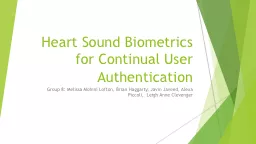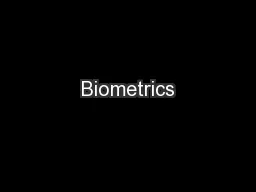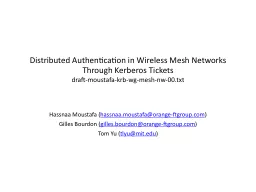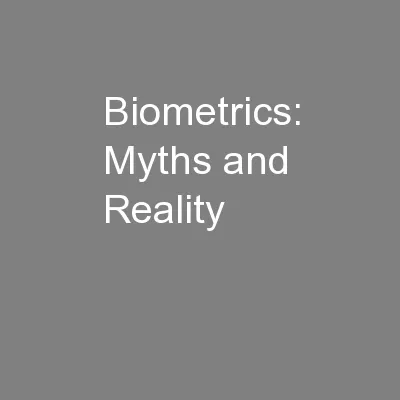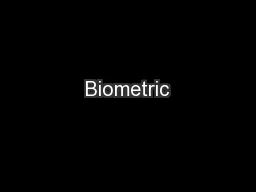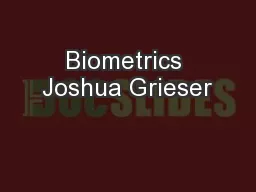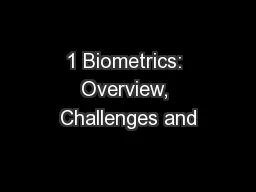PPT-Heart Sound Biometrics for Continual User Authentication
Author : tawny-fly | Published Date : 2017-07-26
Group 8 Melissa Mohini Lofton Brian Haggarty Javin Javeed Alexa Piccoli Leigh Anne Clevenger Biometrics and Authentication Biometrics Biometrics aims to solve
Presentation Embed Code
Download Presentation
Download Presentation The PPT/PDF document "Heart Sound Biometrics for Continual Use..." is the property of its rightful owner. Permission is granted to download and print the materials on this website for personal, non-commercial use only, and to display it on your personal computer provided you do not modify the materials and that you retain all copyright notices contained in the materials. By downloading content from our website, you accept the terms of this agreement.
Heart Sound Biometrics for Continual User Authentication: Transcript
Download Rules Of Document
"Heart Sound Biometrics for Continual User Authentication"The content belongs to its owner. You may download and print it for personal use, without modification, and keep all copyright notices. By downloading, you agree to these terms.
Related Documents

